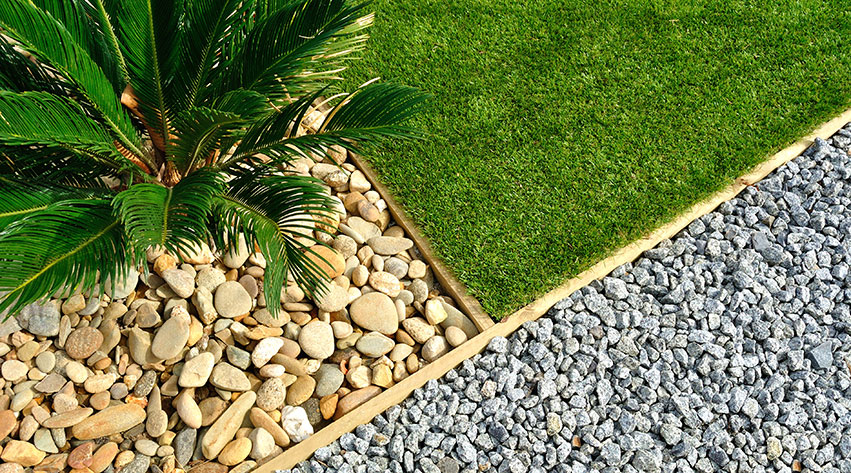- Simple planting patterns that are repeated throughout the garden are synonymous with this style. Sow your seeds in straight lines and repeat colour patterns in other areas of the garden for a really harmonious and timeless look.
- Less is more with this minimalistic style, and that goes for every aspect of the garden. Fewer plants, fewer colours, fewer accessories. Be disciplined when choosing your colour palette and stick to it throughout your space.
- Hard landscaping, colour and texture are often central to the contemporary design of a garden. Decking in oiled wood or crisp coloured smooth granite often make up patio areas, while metal can be used to add structure and definition to the area. You could also consider using sandstone, granite and slate or steel.
- Contemporary borders are usually made up of strong, straight lines, geometric shapes or statement curves and keep to crisp lines and defined areas. As you’re using fewer plants, they need to make a statement so be sure to choose plants that make a big impact. If you’re planning on having a lawn, make sure it’s neat and well bordered.
- A few large containers look much neater in contemporary gardens than numerous smaller, mismatching containers and are a helpful and simple way to create more of the structured lines that you need for this style. The key here is to avoid anything that makes the space seem cluttered.
- Choose contemporary furniture with clean lines to match the overall feel of the garden. Opt for a few choice pieces if space is limited, or if you have more room to utilise, consider creating a range of intimate seating areas throughout the garden.
- Evergreen trees and topiary are your friends in a Contemporary Garden especially because they can combine with other elements to highlight the structure of the space, but it’s important to keep them clipped in line with the neat and clutter-free style.
- White and green is a good base for your overall colour palette. Consider using light paving stones or gravel for patio areas or paths and white flowers always pop against the vivid greenery of foliage.
- Emphasise statement features and be bold in your design decisions. Everything in a Contemporary Garden must have a purpose so take the time to figure out why you’re choosing particular features and then use the design to shout about it.
- You don’t usually associate contemporary designs with natural materials, but in fact natural accessories work well in a garden setting by contrasting the chic, sharp lines that this design will create.



Contemporary garden
Contemporary gardens are becoming increasingly popular with their minimalistic approach to design. Simplicity, style and low maintenance is the order of the day with this garden design, making it easy to create and even easier to look after. A Contemporary Garden is very much an extension of your home and is usually made up of raised beds, geometric shapes, wooden decking and seating areas that ooze sophistication. Concentrate on creating clean lines using stone, wood and metal and keep your planting to a minimum for a chic and uncluttered look.
A contemporary design works particularly well in small, urban spaces but also makes the ideal hub for entertaining if you’re lucky enough to have a bigger garden.
Our top design tips:
The finishing touches
Water features are the perfectly sophisticated way to add interest to what can otherwise be a pretty straightforward garden. Add water for movement and sound, as well as reflection, which can be a particularly useful tool in a smaller space. Generally speaking, this type of garden is more common in urban settings, which tend to be used later in the day. If you’re likely to be spending lots of time outside after the sun has set, a fire pit is the perfect way to ensure your summer evenings can roll on long after the heat of the day has died down. Installing an arbour will help make your Contemporary Garden an extension of the house and offer a focal point and an area for family gatherings, whatever the weather! Lighting this design of garden is much more about how you’re using the light, rather than what the lighting features look like. Using gentle LED spots can create a warming atmosphere, while uplighters or downlights can emphasise some of the beautiful features you’ve carefully selected. Like a firepit, the right kind of lighting will leave you wanting to spend time in the garden, long after dark.







